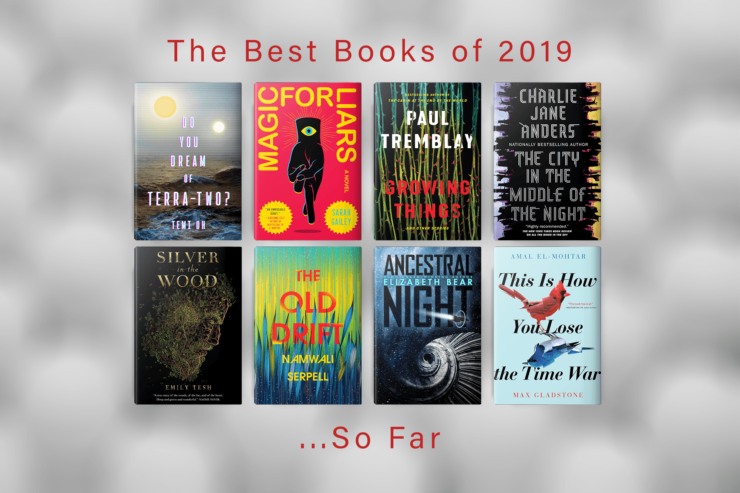We’re halfway through the year, and we have a lot of favorite new reads already. Our reviewers each picked a lot of best-books-so-far, and they almost all picked different books! This year’s highlights run the gamut from introspective science fiction and noir-tinged fantasy, to compelling horror and darkly comic tales of the apocalypse. We’ve got dragons, we’ve got outlaws, we’ve got revolutionaries and pirates and space-faring kings!
Take a gander at our favorites below, and leave your additions in the comments!
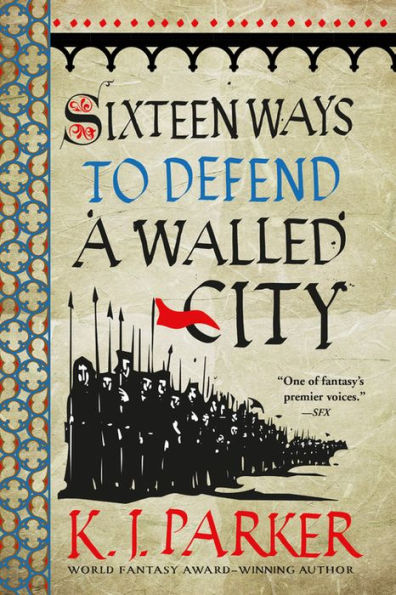 K.J. Parker’s Sixteen Ways to Defend a Walled City is simply, well, more Parker excellence. A scheming, clever protagonist facing impossible odds and difficult—perhaps impossible—moral decisions. For Parker devotees, the unusually epic scope is particularly fun, as are the tantalizing references to the Greater Parkerverse. For Parker newcomers, this may be one of the accessible entry points yet to the wry, bleak, and stylistically unique author’s works.
K.J. Parker’s Sixteen Ways to Defend a Walled City is simply, well, more Parker excellence. A scheming, clever protagonist facing impossible odds and difficult—perhaps impossible—moral decisions. For Parker devotees, the unusually epic scope is particularly fun, as are the tantalizing references to the Greater Parkerverse. For Parker newcomers, this may be one of the accessible entry points yet to the wry, bleak, and stylistically unique author’s works.
Claire North’s The Gameshouse (find my review here) is a bit of a fudge: a long-awaited collection of three interlinked novellas first published a few years ago. Taken piecemeal or as a whole, a spectacular work. A cabal of carefully selected ‘players’ manipulate politics, lives, and world affairs for impossible prizes and the pure joy of the game. As the series escalates, so do the rewards—and the costs. A winner in every way.
I’ve been counting down the days to Temi Oh’s Do You Dream of Terra-Two?—and it was well worth the wait. Terra-Two is a slow-burning, introspective science fiction novel; an examination of human resilience in impossible conditions. Think of it as the sociological, characterful version of The Martian, or a secularised, contemporary version of The Sparrow. A unique perspective on ‘hard’ SF, and I hope to see it in discussion come awards season.
Lee Mandelo
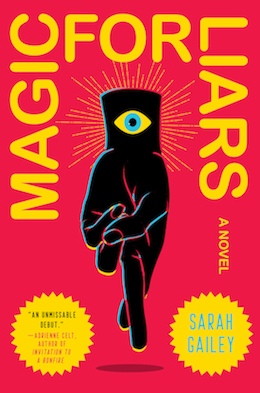 Choosing my “best of the best” so far, an obvious candidate is Magic for Liars by Sarah Gailey. I found it immensely satisfying and provocative from the prose up—the novel packs quite a punch, emotionally and textually, with its mélange of genres. I also adored The City in the Middle of the Night by Charlie Jane Anders, high-concept sf done right with a number of engaging ethical questions about humanity and societal change. Lastly, the re-release of Molly Gloss’s Wild Life deserves a nod as a handsome, gripping mix of historical fiction and adventure sf—worth a luxurious read.
Choosing my “best of the best” so far, an obvious candidate is Magic for Liars by Sarah Gailey. I found it immensely satisfying and provocative from the prose up—the novel packs quite a punch, emotionally and textually, with its mélange of genres. I also adored The City in the Middle of the Night by Charlie Jane Anders, high-concept sf done right with a number of engaging ethical questions about humanity and societal change. Lastly, the re-release of Molly Gloss’s Wild Life deserves a nod as a handsome, gripping mix of historical fiction and adventure sf—worth a luxurious read.
Outside of the speculative realm, I’d recommend The Stonewall Reader, a collection of contemporaneous documents edited from the archives of the New York Public Library to mark the fiftieth anniversary of the Stonewall Inn riot—a historical, contextual view of queer rights in motion. There’s also Laura Dean Keeps Breaking Up with Me by Mariko Tamaki and Rosemary Valero-O’Connell, a graphic novel exploring an emotionally damaging, manipulative relationship between two young women with a tender, critical-but-kind lens and gorgeous illustration (plus a comforting variety of bodies and queer identities visible on the page).
Paul Weimer
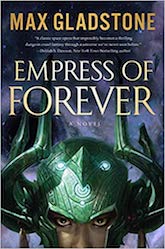
Empress of Forever, Max Gladstone—Recently published, Gladstone switches into SF space opera mode, bringing to life a vast and yet intimate work that feels like a cross between Guardians of the Galaxy, Jupiter Ascending and Farscape. Characters whose personalities and arcs sing across the novel, worldbuilding that is rich and enrobing, and crackerjack plotting and pacing, I devoured the novel avidly.
For the Killing of Kings, Howard Andrew Jones. If Roger Zelazny decided to take the multi-world canvas of his Amber universe, and marry that to the sensibilities, pulse pounding action, pacing, and fun adventure of Alexandre Dumas, you would get Howard Andrew Jones’ fantastic turn into adventure fantasy, For the Killing of Kings. Layered characters, action beats that jump off the page, and staking a spot in optimistic, bold, fun fantasy that is diametrically opposed to the Grimdark dominating the field, For the Killing of Kings stands out like a beacon.
Ancestral Night, by Elizabeth Bear—It’s been a while since Elizabeth Bear has given us big, bold space opera, given all the many fields of science fiction and fantasy that she tries, but the wait was worth it. Large canvas space opera with big bold ideas, combined with a strong first person narrative and an intimate and very touching story that explores ideas of memory, autonomy, mental health, freedom, big dumb objects, aliens, stellar engineering, and much more.
Leah Schnelbach
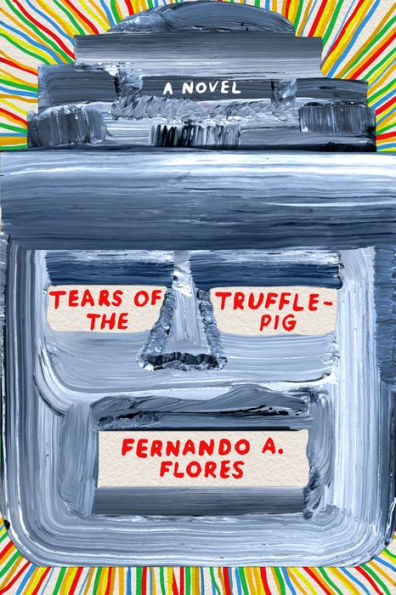
Fernando A. Flores debut novel Tears of the Trufflepig is as vibrant and darkly comic as the Border culture it depicts. Set in a barely near-future South Texas, the story follows Ernesto Bellacosa, who gets embroiled in the world of underground genetically engineered extinct animal banquets, an attempt to bring an ancient mythical creature to life, and an attempt to steal the world’s supply of giant carved Olmec heads. He’s also trying to find a way to move forward in life after years of grieving his wife and daughter, who died during a worldwide food shortage that decimated Earth’s population.
Got all that?
This book is funny and heartbreaking. Flores has given us a compelling refraction of both the tensions and hatreds that animate interactions between Mexicans, USians, and Mexican-USians at the border, and also the kaleidoscopic culture that results when different cultures are allowed to swirl together. It is an incredibly vital book for 2019.
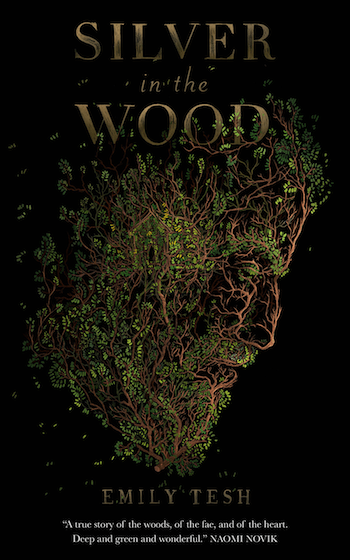 Having already told the internet about my difficulty with picturing stories I’m reading, Silver in the Wood floored me by having some of the realest prose about forests I’ve ever read. The kind of descriptions that slip right past your ribs and camp next to your heart. I could try to say profound things about craft, or talk about the characters (who I adore endlessly), or make mention of the subtle complexities of theme author Emily Tesh weaves into such a seamless package, but all I really want to talk about is how this story made me feel—which, for me, is pretty much the highest compliment I can give a book. My only quibble is that it was over far too soon.
Having already told the internet about my difficulty with picturing stories I’m reading, Silver in the Wood floored me by having some of the realest prose about forests I’ve ever read. The kind of descriptions that slip right past your ribs and camp next to your heart. I could try to say profound things about craft, or talk about the characters (who I adore endlessly), or make mention of the subtle complexities of theme author Emily Tesh weaves into such a seamless package, but all I really want to talk about is how this story made me feel—which, for me, is pretty much the highest compliment I can give a book. My only quibble is that it was over far too soon.
Matthew Keeley
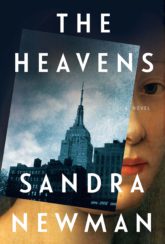
Sandra Newman’s wonderful novel The Heavens has been my go-to book recommendation since February. It’s a fantasy about the implacability of reality, which sounds bleak, but there’s such lightness and grace and sympathy to Newman’s writing. This one deserves to be a classic.
My second pick is The Best of R. A. Lafferty. 2019 might be the start of a long-overdue Lafferty revival, and this book might surpass Nine Hundred Grandmothers as the ideal introduction to this unique writer. I have just one complaint about this title, but it’s a big one: No U.S. publisher has yet picked up the rights, so it remains U.K.-only for the moment. Someone, anyone: Publish this book!
Finally, I want to mention T.F. Powys’s bizarre Unclay, which New Directions reissued at the very end of 2018. I don’t think Powys wanted a large audience, but I know he deserves an attentive one. It’s as discomfiting and unusual today as it was when it first appeared nearly ninety years ago.
Alex Brown
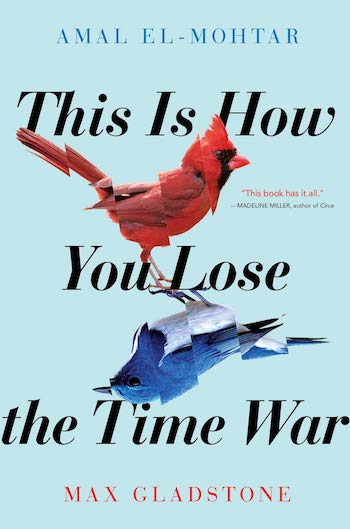
I was lucky enough to get an advanced reader’s copy of This Is How You Lose the Time War by Amal El-Mohtar and Max Gladstone and it is AH. MAZE. ING. It’s hands down my favorite adult science fiction book of the year so far, and I can’t imagine anything else knocking it off that spot anytime soon. It’s devastatingly beautiful and hauntingly vicious story about the cost of love.
Speaking of awesome science fiction, Amy Rose Capetta and Cori McCarthy’s Once & Future is probably the queerest thing I’ve ever read. It’s a YA update of the King Arthur myth set in space but with magic and pretty much everyone falls somewhere under the queer umbrella. I adored this fun, wild, heartbreaking novel with all my soul.
Zen Cho’s Sorcerer Royal series has all the romance and charm of Jane Austen with the magic and mayhem of Susanna Clarke, but with fierce feminist and anti-colonial twists. The True Queen, the second in the series, takes that premise and adds in a queer romance between two women trapped by the social conventions of Regency England. It’s delightful and compelling. Also: dragons!
And a few quick shoutouts to some excellent short speculative fiction: “How to Make a Paper Crane” by Elsa Sjunneson-Henry (Uncanny Magazine – technically non-fic but I’m including it anyway), “A Theory of Flight” by Justina Ireland (The Verge), and “My Sister Is a House” by Zoë Medeiros (Fireside). These stories are etched into my bones now. Weeks and months have passed and yet I still can’t stop thinking about them.
Theresa DeLucci
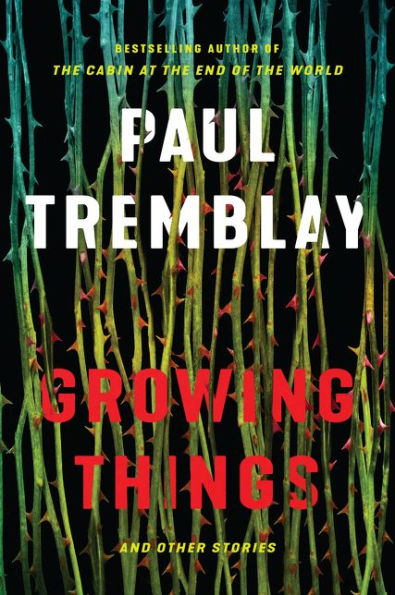
I read a lot of short fiction throughout the year; horror still loves the short form and two major collections were released this season.
The first one I read was Paul Tremblay’s Growing Things, notable especially for the original stories that tied into his award-winning, Stephen King-endorsed novel, A Head Full of Ghosts. Merry and Marjorie Barrett return in two tales, one a post-Head surreal story-within-a-story, layered with metaphors and ambiguity, the other, “Growing Things,” a creepy fable those familiar with the two sisters will instantly recognize.
Nathan Ballingrud’s Wounds: Six Stories from the Border of Hell got under my skin in ways few other books have done before. And I have a really thick skin. Wounds is the name of the recent film adaptation of “The Visible Filth,” collected here and, sweet, baby cockroach Jesus, it is a filthy novelette of a relationship in decline, found footage discovered on a lost cellphone, and the lesson any Clive Barker fan would know: Not all angels should be summoned. Like Barker before him, and recent dark fantasists like Caitlin R. Kiernan (who also had a best-of collection this year), Ballingrud excels at creating an elaborate mythology of Hell, on display here in the standout original novella, “The Butcher’s Table.” The titular 19th-century pirate ship sails to the shores of Hell for a blasphemous feast, captained by a secretive man, its cargo members of an arcane society of Satanists and a creature stolen from that dark underworld. It’s Hieronymus Bosch in prose form—it’s baroque, grotesque, gorgeous, and compelling.
Tobias Carroll
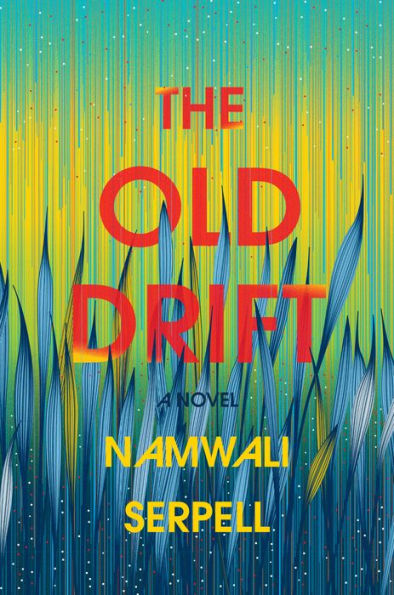
I came of age reading multigenerational family sagas—which may have been my bridge between fantastic and realistic fiction. Many years later, I’m particularly enthusiastic to be reading and enjoying books that take that template and upend its conventions. Recent works I’ve dug in this vein have included Esmé Weijun Wang’s The Border of Paradise, Jennifer Nansubuga Makumbi’s Kintu, and—from earlier this year—Namwali Serpell’s The Old Drift. It’s a multi-generational family saga set in and around Zambia; it’s also a book that takes a bold shift into the speculative in its closing pages. In the end, I was both thrilled by Serpell’s novel and impressed by her ability to pull off such an impressive narrative shift.
My teenage years are also when Dell launched their Abyss imprint, which gave me an eternal fondness for horror fiction that’s both heady and unsettling. Two recent collections, Brian Evenson’s Song for the Unravelling of the World and John Langan’s Sefira and Other Betrayals, scratch that itch for me perfectly. I’m left awed by their handling of language and craft, and the details of their stories keep me up at night. Who could ask for more?
Martin Cahill
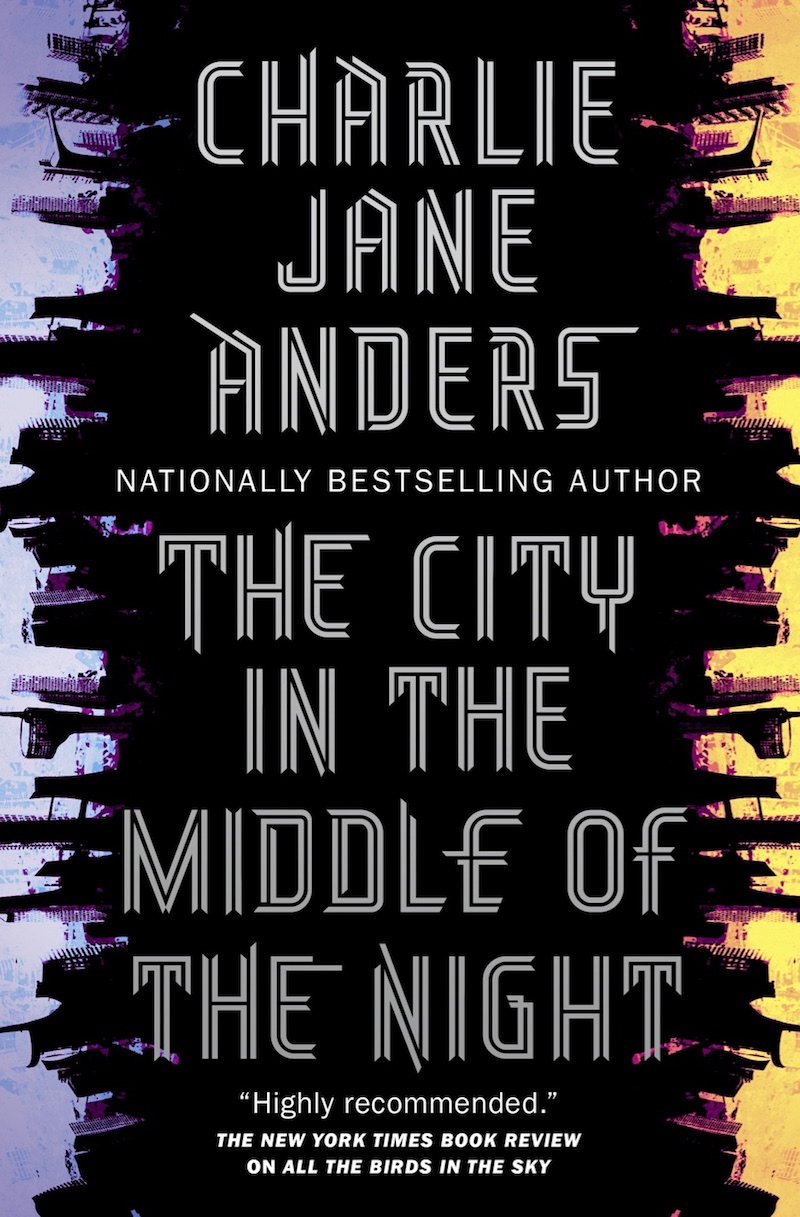
The City in the Middle of the Night by Charlie Jane Anders. A tidally locked planet. A city in perpetual twilight. Two women whose lives are turned inside out, because they venture out into the night. Anders’s newest novel is a brilliant, intelligent science fiction novel that simultaneously asks you what humanity could be someday, while with love, care, empathy, and nuance, illustrates the urges and struggles humanity must wrestle with.
Empress of Forever by Max Gladstone. Do you enjoy Max Gladstone? Do you like space opera? Do you enjoy highly competent queer women allied with strange and wonderful beings in the year three million, seeking vengeance against an immortal tyrant among the stars? Then Empress of Forever is the book for you. It’s everything you love about Max Gladstone, turned up to one thousand, with flames painted on the side, and full of nuanced, loving, mind-blowing adventures of a galaxy at the end of time.
Wounds: Six Stories from the Border of Hell by Nathan Ballingrud. A collection of seriously gorgeous horror work, Ballingrud’s Wounds: Six Stories from the Border of Hell all orbit around the infernal, as book collectors, bartenders, pirates, scavengers, daughters, and priests to mad gods all contend with the varied countries of Hell, and its many, horrific intricacies. Ballingrud has always been an author to watch, but it’s this collection that elevates him to new heights. His signature take on the brutal and ghoulish is only more enticing, as they reveal the sometimes sinister, but always complex inner workings of the human heart.










